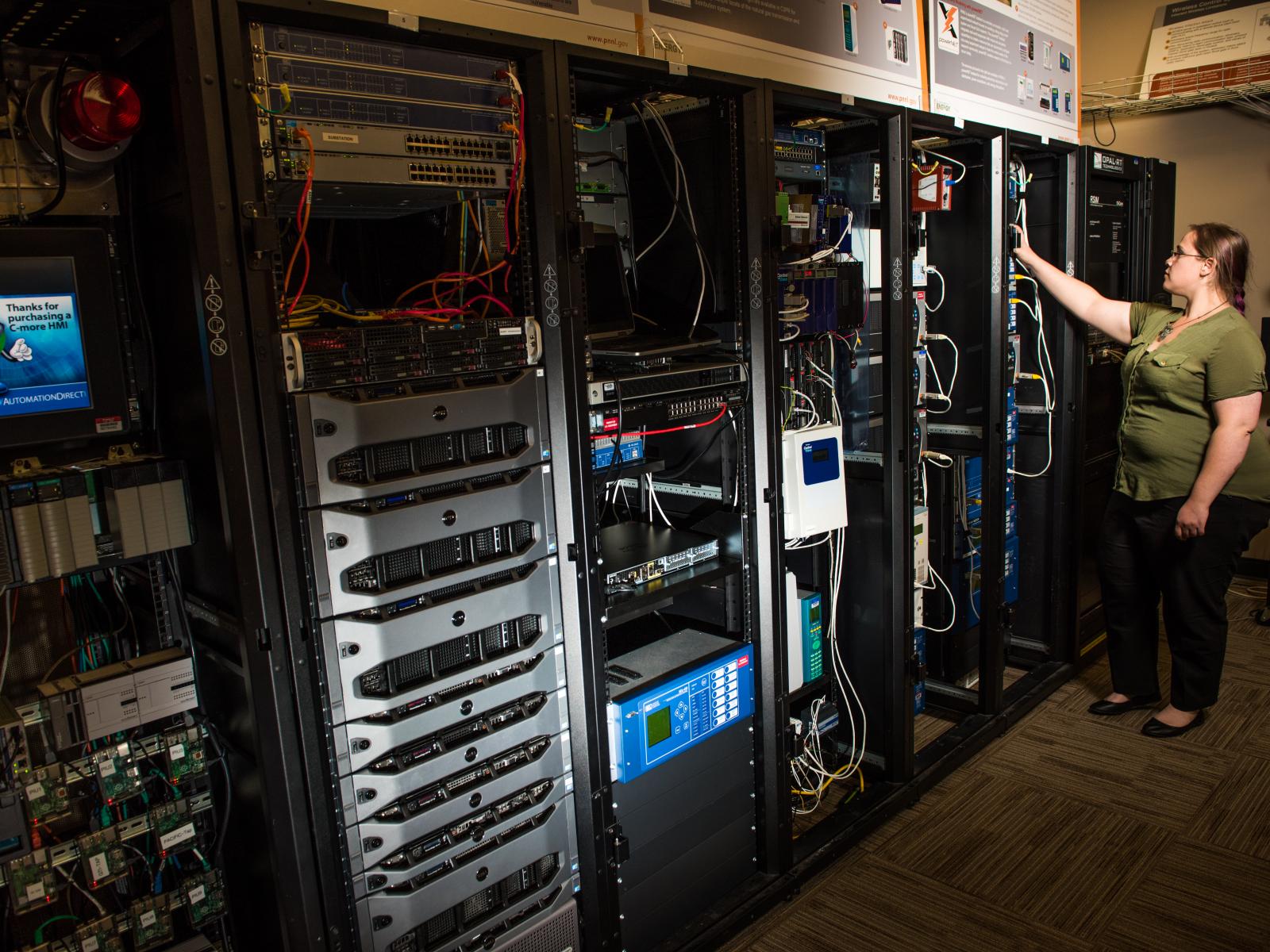Systems Engineering Building

The SEB's Interoperability Lab.
The U.S. electric power grid is the most complex machine ever built, and transforming it from an early 20th Century system to a 21st Century engine for innovation is one of the biggest scientific and technical challenges PNNL scientists are working to solve. They are discovering many of those solutions at the Systems Engineering Building (SEB).
With a focus on modernizing the power grid, the SEB provides advanced laboratory space and equipment to advance basic and applied research in electricity markets, generation, transmission, distribution, and end use, including buildings-grid integration. The work furthers the integration of renewable energy and protects the grid from cyberattack, physical attack, and severe weather.
The SEB’s resources help make up PNNL’s unique, utility-grade control center infrastructure that supports research in grid visibility, control, and resiliency; those resources are coupled with the largest national repository of grid data and models to inform the research. Facilities include:
-
the Electricity Infrastructure Operations Center, which deploys advanced mathematical and computational science to improve power grid management and control in real time
-
the Buildings Operations Control Center, which simulates new control strategies that increase energy efficiency within buildings, while simultaneously reducing strains on the power grid
-
the Power Electronics Lab, which supports electric vehicle charging, energy storage, metering, and building controls research
-
the Interoperability Lab, which enables networks, systems, devices, applications, or components to exchange information to prioritize energy usage.
A LEED gold-certified facility, the SEB also contains:
-
three control rooms
-
an adjacent outdoor pad that provides space to connect to even larger assets, such as utility-scale energy storage units and commercial-grade, rooftop air conditioners
-
advanced industry software, real-time grid data, and computational resources.